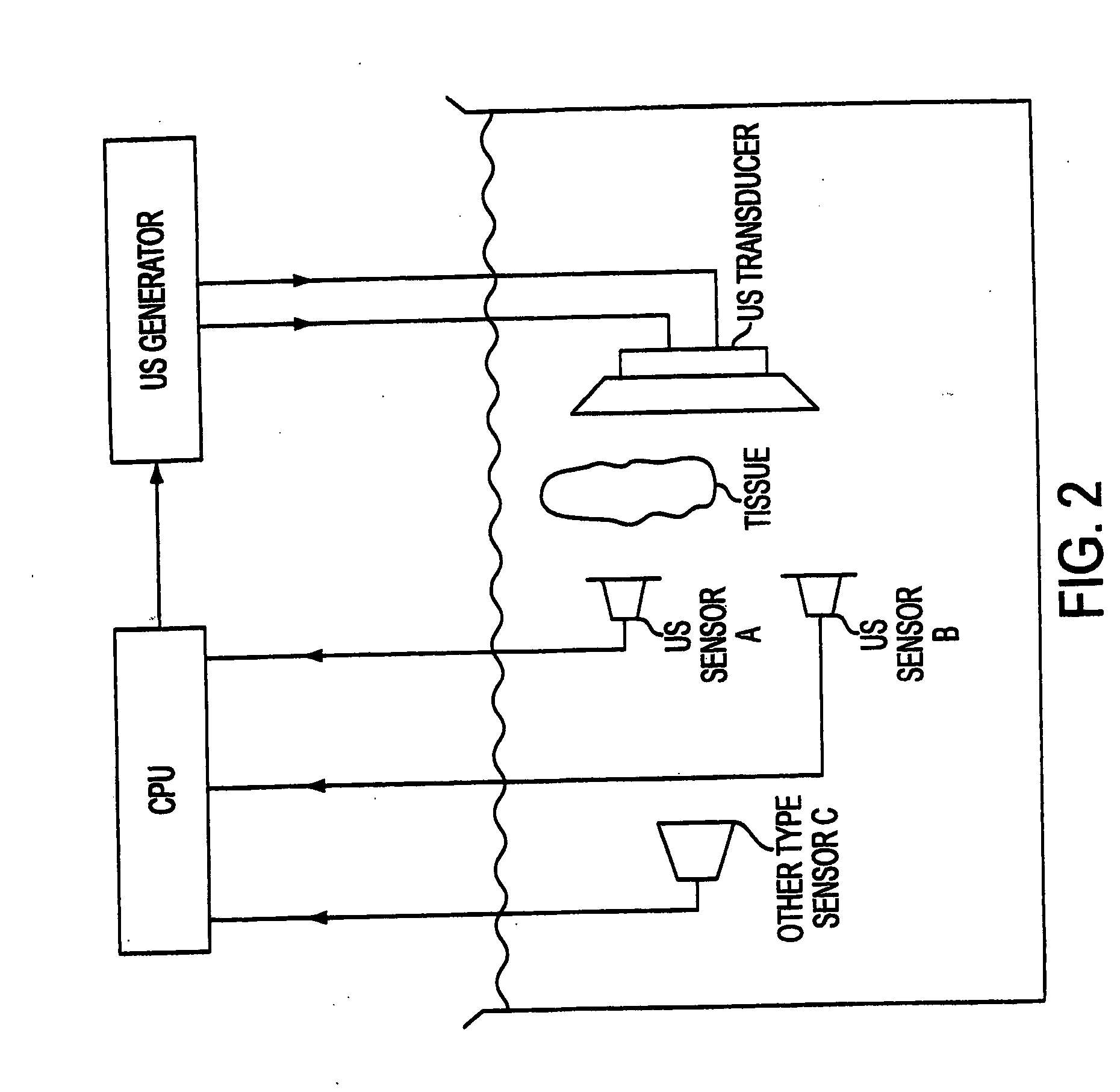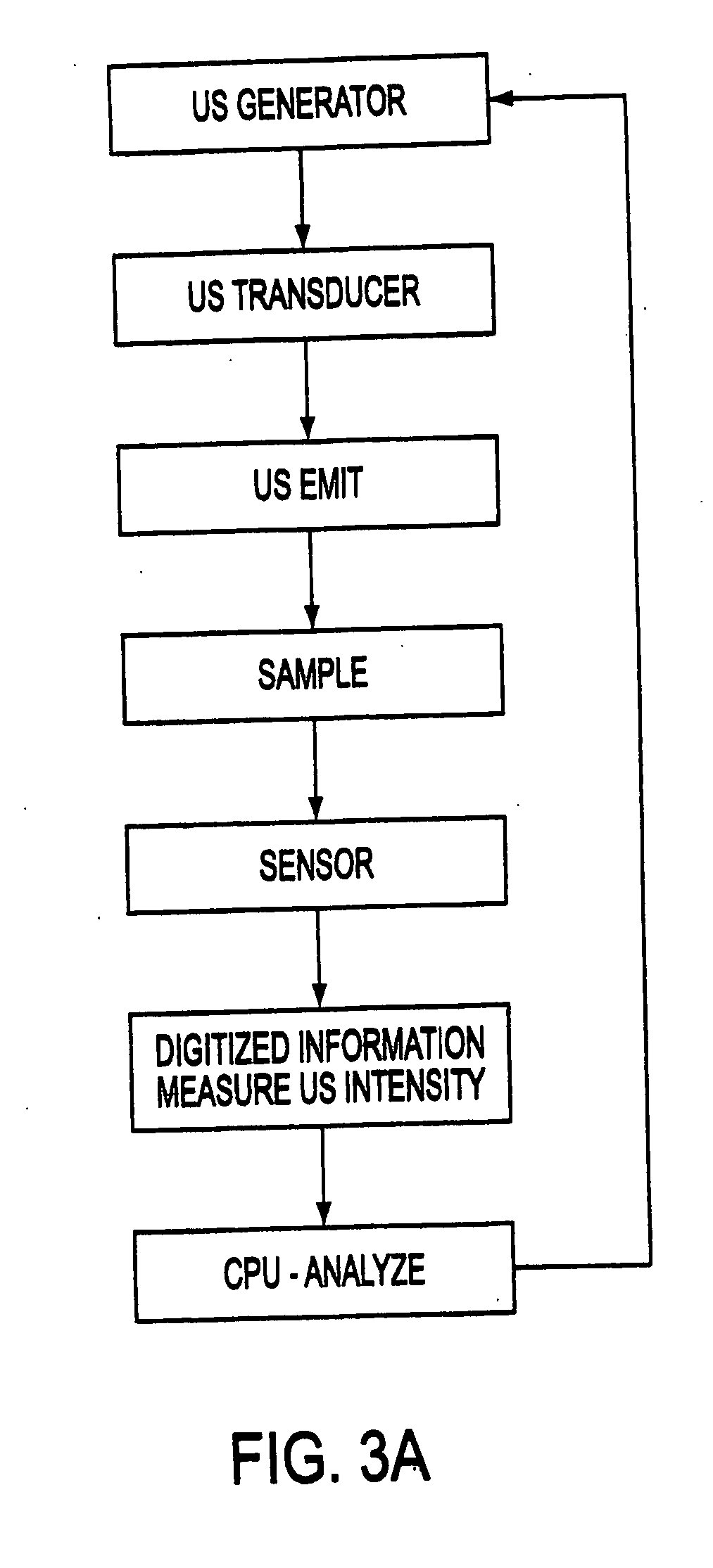Ultrasound-mediated high-speed biological reaction and tissue processing
a biological reaction and ultrasonic technology, applied in the field of ultrasonic high-speed biological reaction and tissue processing, can solve the problems of insufficient time to allow even penetration and complete reaction with the tissues, the heat as a form of tissue fixation has not been exploited in the diagnostic laboratory, and the time taken for 10 seconds is not enough
- Summary
- Abstract
- Description
- Claims
- Application Information
AI Technical Summary
Benefits of technology
Problems solved by technology
Method used
Image
Examples
example 1
Tissue Fixation and Processing
[0083] A general procedure for preparing tissue fixed by NBF, processed and imbedded in paraffin using ultrasound as part of the process to decrease the required time to prepare the sample for use follows. Specifics are set out in the Examples which follow the general procedure. Those of skill in the art recognize that many variations can be made in the following procedures and the values set forth in the following procedures and Examples are not meant to be limiting.
A) Fixation
[0084] Step 1: A fresh tissue sample is cut in a size range from 3 to 5 mm thick, preferably less than 5 mm thick.
[0085] Step 2: The tissue sample (a single piece) is immersed in a 10% formalin solution or other acceptable fixative. Depending on the type of tissue, the sample is immersed from 5 to 30 minutes at 37° C., preferably for 15 minutes. During the immersion the sample is subjected to ultrasonic energy. When using a fixed power setting, the frequency of the ultrasoni...
example 2
Ultrasonic Apparatus and Application
[0097] The ultrasonic apparatus used in the present study was specifically designed by the inventor and built by Bio-Quick, Silver Spring, MD. It consisted of an ultrasonic generator and a 1.6-1.7 MHz ceramic transducers (1.5 cm diameter) with adjustable output intensity range of 1 to 22 W / cm2. The tissue (only one sliced tissue at time), which was irradiated by ultrasound in 200 mL of NBF, grades of alcohol, xylene and 60° C. paraffin, was directly faced and aimed at the transducers. The distance between the transducers and irradiated tissue was within 3 cm to insure that the tissue received even and accurate ultrasound energy. The application of ultrasound was always continuous rather than pulsed. The tissue receiving ultrasound energy was monitored by means of a UW-3 ultrasound watt meter (Bio-Tek Instruments Inc., Winooski, Vt.). The temperature of the fixative inside the container was limited to 37° C. during the exposure to ultrasound.
example 3
Immunohistochemistry with Ultrasound
[0098] Tissue sections from each experiment were stained with a panel of seven primary antibodies (CD20, CD45, CD3, CD5, Bcl-2, kappa and lambda; Table 1). The primary antibodies were demonstrated using the ABC method (Hsu et al., 1981; Chu et al., 1992) as follows: sections were deparaffinized and taken through to 70% alcohol before being placed into water. Sections were then pretreated with / without antigen retrieval by MW (Shi et al., 1991) or pepsin (Chu et al., 1999) as required for each antibody (Table 1). Sections were rinsed in phosphate buffered saline (PBS) and incubated in primary antibody for 5-10 minutes at room temperature with a higher single frequency (1.6-1.7 MHz) setting and lower power (0.01-5 W / cm2) setting of ultrasound. After three rinses in PBS for 5 seconds with ultrasound, sections were incubated in biotinylated second antibody for 2.5 or 5 minutes at room temperature with ultrasound. Sections were rinsed in PBS with ultra...
PUM
| Property | Measurement | Unit |
|---|---|---|
| temperature | aaaaa | aaaaa |
| frequency | aaaaa | aaaaa |
| frequency | aaaaa | aaaaa |
Abstract
Description
Claims
Application Information
 Login to View More
Login to View More - R&D
- Intellectual Property
- Life Sciences
- Materials
- Tech Scout
- Unparalleled Data Quality
- Higher Quality Content
- 60% Fewer Hallucinations
Browse by: Latest US Patents, China's latest patents, Technical Efficacy Thesaurus, Application Domain, Technology Topic, Popular Technical Reports.
© 2025 PatSnap. All rights reserved.Legal|Privacy policy|Modern Slavery Act Transparency Statement|Sitemap|About US| Contact US: help@patsnap.com



